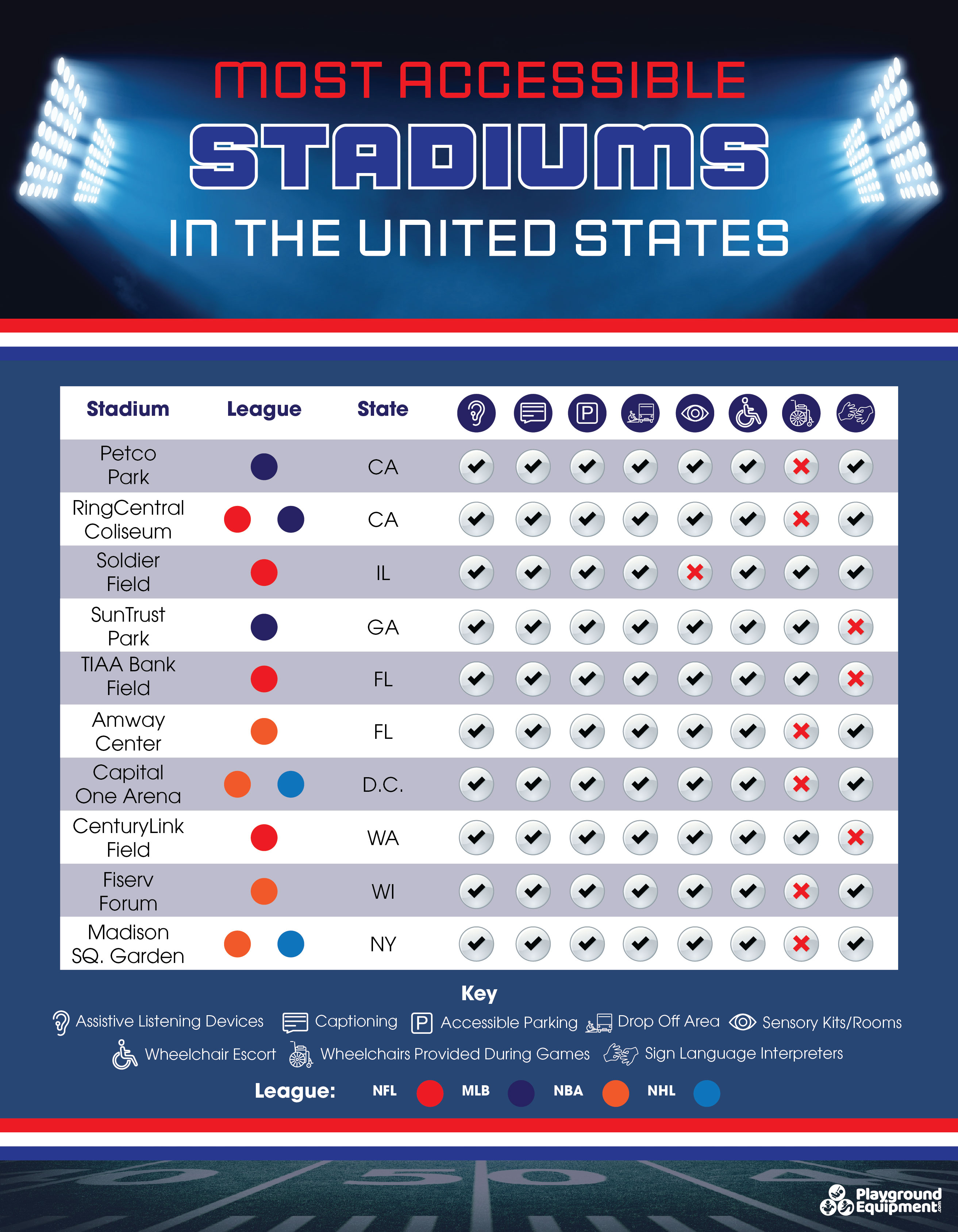Which US Sports Stadiums are the Most Accessible?
Accessibility in sports stadiums is of paramount importance as it ensures inclusivity, allowing everyone, regardless of physical ability or age, to enjoy the excitement and communal spirit of live sports events. A truly accessible stadium provides not just wheelchair-accessible seating, but also easy access to entrances, exits, restrooms, concession stands and all venue facilities. Features such as ramps, lifts, tactile signage for visually impaired individuals, and hearing loops for auditory-impaired individuals empower fans with disabilities to navigate the venue independently and safely. Inclusive design also benefits older spectators and parents with strollers, creating a more comfortable and enjoyable experience. By implementing comprehensive accessibility measures, stadiums exemplify a commitment to equality and non-discrimination, enhancing reputation and brand value. Furthermore, improved accessibility also broadens the potential customer base and boosts attendance, making it both an equitable and smart business practice.
According to VegasBetting.com, the top eight criteria for accessibility in sports stadiums are access to:
- Assistive listening devices
- Closed captioning
- Accessible parking
- Drop off areas
- Sensory kits/rooms
- Wheelchair escorts
- Complimentary wheelchairs
- Sign language interpreters
Here are the top major sports stadiums in the US, ranked by accessibility:
Click to view the full-size infographic:
Inclusivity and accessibility in sports stadiums significantly enhance the overall experience for patrons. Fans with varying levels of physical ability, age, or health are able to attend and immerse themselves fully in the exhilaration of live sports events.
For wheelchair users, accessible seating areas provide an unhindered view of the event. Ramps and lifts ensure easy navigation throughout the venue, enabling fans to independently access facilities and services. Likewise, patrons with limited mobility or elderly fans benefit immensely from these adaptations.
Equal access to amenities, whether it's concession stands or restrooms, guarantees a more comfortable and relaxed experience for all. Furthermore, considerate additions like tactile signage or hearing loops enable patrons with visual or hearing impairments to enjoy the event to its fullest extent.
Beyond those with specific physical needs, families can greatly benefit from accessible design. Parents with strollers, for example, find ramps and elevators extremely useful.
Offering a sports venue that is fully accessible reframes the event as a shared cultural experience that brings together all members of a community, promoting unity and mutual respect. Everyone benefits from an environment where inclusivity and diversity are championed, enhancing the enjoyment of the event and making it a truly social occasion.
Here’s a list with some more examples of US sports stadiums and their respective accessibility scores:
|
Stadium |
Location |
Capacity |
Accessibility Score (out of 8) |
|
Petco Park |
San Diego, CA |
40,162 |
7 |
|
Metlife Stadium |
East Rutherford, NJ |
82,500 |
7 |
|
US Bank Stadium |
Minneapolis, MN |
66.860 |
7 |
|
Fenway Park |
Boston, MA |
37,949 |
6 |
|
Bridgestone Arena |
Nashville, TN |
17,113 |
6 |
|
Gainbridge Fieldhouse |
Indianapolis, IN |
17,923 |
6 |
|
Bank of America Stadium |
Charlotte, NC |
75,523 |
5 |
|
Oracle Field |
San Francisco, CA |
41,915 |
5 |
|
Minute Maid Park |
Houston, TX |
41,676 |
5 |
|
American Airlines Center |
Dallas, TX |
19,200 |
4 |
|
Comerica Park |
Detroit, MI |
41,297 |
4 |
|
Raymond James Stadium |
Tampa, FL |
65,618 |
3 |
|
Angel Stadium |
Anaheim, CA |
45,657 |
2 |
|
Paul Brown Stadium |
Cincinnati, OH |
65,515 |
2 |
Learn about the author: Ben Thompson


